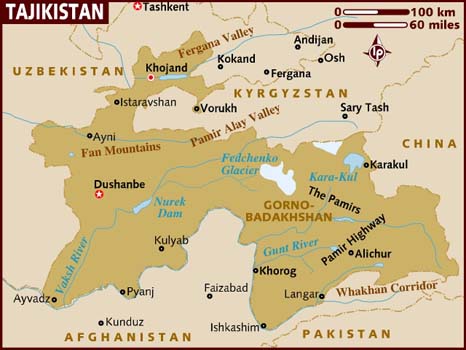October 16, 2012
Goodbye, Tajikistan. It was far too short of a visit, but I’m sure we’ll meet again someday. The rugged Pamirs are calling my name…
We were headed to Tashkent, where I had overnighted only a few days prior when I first arrived in Central Asia. The road from Khujand to the Uzbek border was new, having recently been built by the Chinese. After the usual jockeying for position at the chaotic passport control “lines”, we had finally managed to make it back into Uzbekistan. The drive through the Uzbek countryside to Tashkent took less than two hours.



Cotton fields




With a population of 2.2 million, Tashkent is the largest city among the post-Soviet republics of Central Asia. Though it still retains the hallmarks of Soviet planning (large blocks of prefab apartment buildings, wide boulevards, and well maintained parks) the city is undergoing a construction boom, with miles of new apartment and office buildings being erected along the main boulevards.
We were leaving for Samarkand the following morning, so only had an afternoon to explore (however we would be returning to Tashkent yet again later in the trip).

Martyrs’ Memorial Complex, erected to honor the victims of Russian and Soviet rule


Tashkent TV tower


Courage Memorial that commemorates the powerful earthquake that struck Tashkent on April 26, 1966, leaving over 300,000 residents homeless. Afterward, construction workers from all areas of the Soviet Union converged on Tashkent to help rebuild the city.
And then we wandered the streets of my favorite part of Tashkent, Old Town. The Old Town felt like we had entered another world; gone were the highrises and traffic clogged streets, now replaced by low mud brick houses and narrow, shaded streets.







From the Old Town we continued to Hast Imam Square, where we saw Caliph Uthman’s Koran, the oldest in the world. Completed in the year 651, its words written on pages of deer skin, it is considered the primary source of Islam. Legend has it that Uthman, a former companion of Muhammad, was reading from this Koran when he was murdered by a group of rioters, staining the pages with his blood.


Barakh-khan Madrasah

The Tellya-Sheikh Mosque



And then on to Independence Square…


Memorial to the 400,000 Uzbek soldiers killed in World War II (The Great Patriotic War)


Names of the soldiers engraved on these large plaques



We saw newlyweds nearly everyday we were in Uzbekistan. It is quite common to have wedding photos taken in front of historical monuments and buildings, so we were constantly encountering them.

A statue of Lenin once stood here. It was replaced with this globe, a monument to Uzbek independence.


























